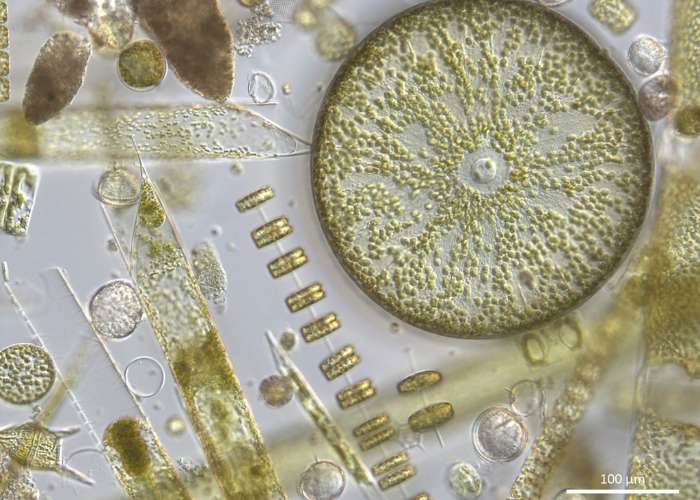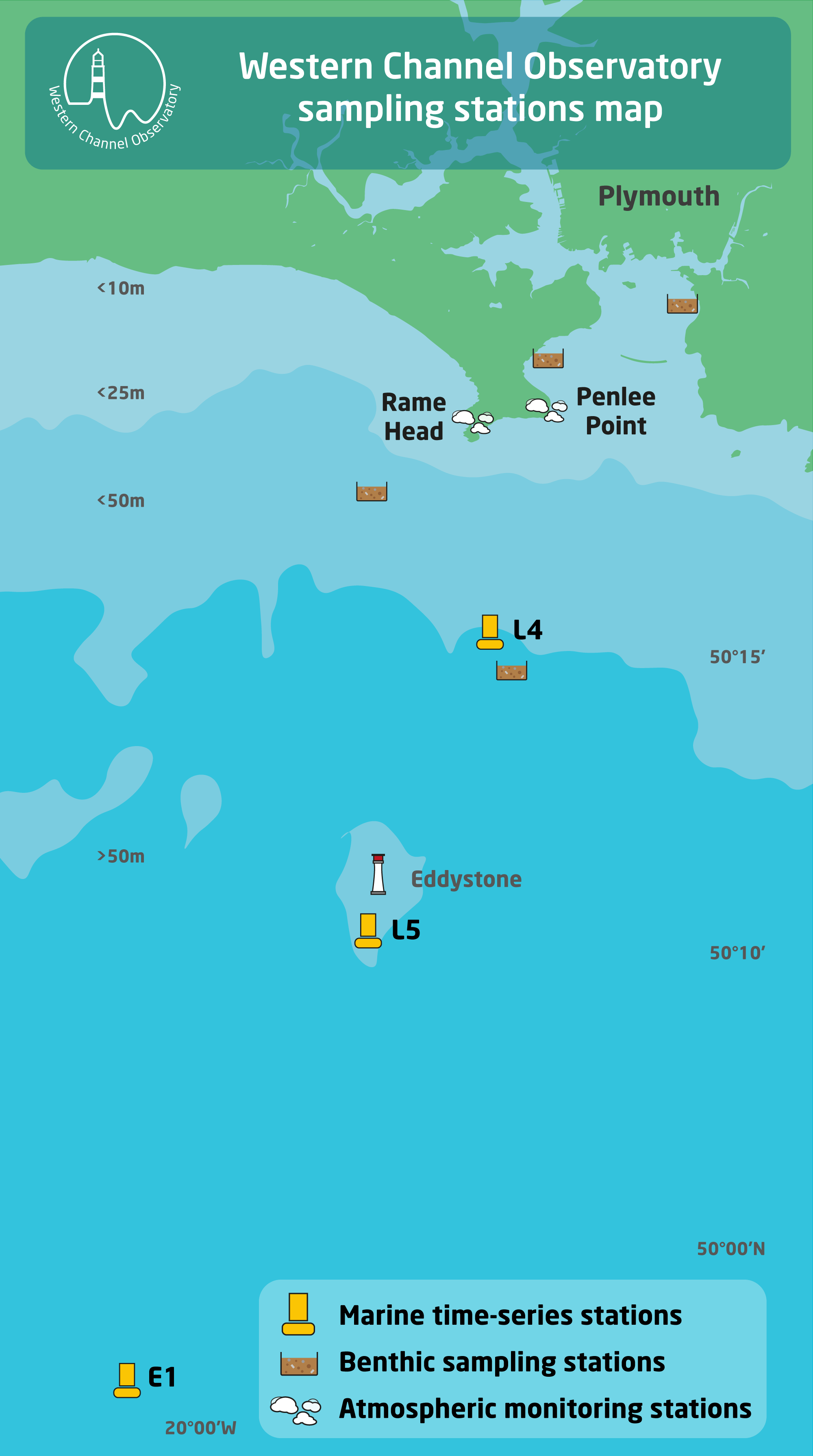About The Western Channel Observtory
The Western Channel Observatory
The Western Channel Observatory (WCO) serves as a vital hub for oceanographic research and biodiversity monitoring in the Western English Channel. At the heart of this observatory, dedicated researchers conduct regular in situ measurements at the coastal station L4 and the open shelf station E1, utilising the research vessels of Plymouth Marine Laboratory (PML) and the Marine Biological Association (MBA). These measurements, combined with PML's expertise in ecosystem modeling and satellite remote sensing, create a comprehensive understanding of the marine environment. By integrating diverse observational disciplines, the WCO unravels the intricate complexities of the marine ecosystem, shedding light on its dynamics and providing valuable insights for conservation and management efforts.
Interactive Map
History
Here are some key dates which influenced the Western Channel Observatory.
-
1884
Marine Biological Association is created. The Marine Biological Association (MBA) has been committed to advancing research into our oceans and the diverse ecosystems they sustain for a remarkable duration, making it one of the oldest societies of its kind in the world.
-
1903
In 1903, the E1 Time Series was launched, marking a significant milestone in scientific data collection. This pioneering initiative laid the foundation for long-term observations and provided invaluable insights into the dynamics of various environmental factors over an extended period. It’s located 25 nautical miles south-west of Plymouth.
-
1924
The Russell Cycle started in the English Channel has been a valuable source of zooplankton time-series data spanning from 1924 to 2011.
-
1931
Initiated in 1931 by Sir Alister Hardy and Sir Cyril Lucas, the Continuous Plankton Recorder (CPR) Survey stands as one of the most enduring marine biological monitoring programs globally. This comprehensive survey encompasses measurements of plankton communities, alongside extensive observations of oceanic physical, biological, and chemical aspects, spanning vast oceanic regions. It serves as a crucial resource for marine scientists and policy-makers seeking a deeper understanding of our oceans.
-
1988
In 1988, the re-establishment of the L4 station brought renewed significance to the scientific community. This reinstatement allowed for continued monitoring and research, enabling scientists to gather crucial data and expand our understanding of the marine ecosystem at this specific location.
-
1992
In 1992, phytoplankton gained increased attention from researchers, garnering significant scientific interest. This led to intensive studies and investigations into the role and impact of pytoplankton in marine ecosystems, providing valuable insights into their ecological importance and contributions to global biogeochemical cycles.
-
2006
The year 2006 marked the establishment of the Western Channel Observatory, a notable milestone in marine research and monitoring. This observatory provided a dedicated platform for scientists to conduct comprehensive and long-term studies, enabling the collection of valuable data on various aspects of the Western Channel ecosystem, contributing to our understanding of its dynamics and ecological processes.
-
2008
The Benthic Time Series was restarted in 2008, enabling scientists to continue their research into benthic communities and their responses to environmental changes. The resumption of this program facilitated long-term monitoring, leading to the collection of valuable data on the benthic ecosystem, helping scientists gain insights into the potential impacts of climate change on the region.
-
2009
In 2009, the release of the WCO L4 and E1 buoys represented a significant step forward in oceanographic monitoring capabilities. These buoys provided a wealth of real-time data on physical and biological parameters, facilitating continued research into the dynamics of the Western Channel ecosystem and contributing to our understanding of the impacts of environmental change.
From photons to fish, from seconds to centuries ...
The WCO measures several key parameters important to the functioning of the marine ecosystem such as light, temperature, salinity and nutrients. Station L4 has some of the longest time-series in the world for zooplankton and phytoplankton, and fish trawls have been made by the MBA for a century.
Station L4 also has UN Ocean Decade-recognised biomolecular observations. Station E1 has a hydrographic series dating from 1903. These long series are complemented by hourly measurements made at our moorings situated at both stations. These can elucidate changes not captured by the routine weekly sampling.
View WCO data
 Western Channel Observatory
Western Channel Observatory
